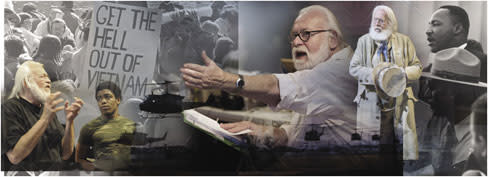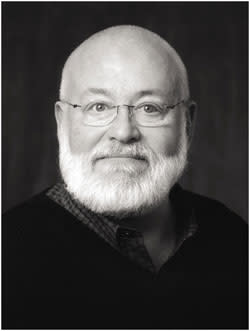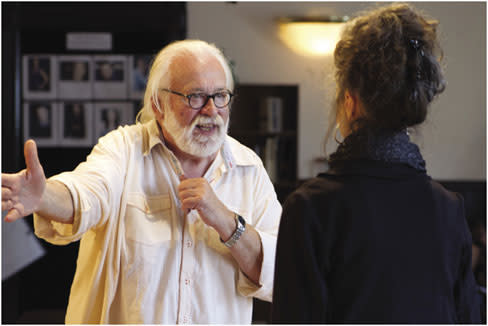War By Other Means

I first came to Florida's Sun Coast in 1966. It was mid-August and brutally hot. I traveled from Chicago by train to start my first job as an instructor in the speech department at the University of South Florida in Tampa. The university was only seven years old. I was 22.
The heat was not really bothersome. It was just as sweltering in Chicago, where I grew up. My new boss, the chair of the department, was Dr. James Popovich. I had just finished my master's degree at Northwestern, where he had received his doctorate, and because he knew some of my teachers, he hired me after a brief phone interview. We were both a little desperate. He needed an instructor, and I needed a job that would keep me out of the draft. The Vietnam War was in full cry, but if you had a job at a "state" school you were exempt from the draft. Some of my friends who were also against the war moved to Canada. One friend starved himself for months so that he would fail the physical.
I taught 11 courses every quarter at USF, with 15 or 20 students in each class. I scrambled to stay ahead of them in courses that ranged from "Public Speaking" and "Phonetics" to "Oral Interpretation," which involved students in the study of literature through performance—in other words, "reading out loud." Some of those "Oral Interpretation" classes explored poetry, some fiction and some nonfiction and history. It was an exciting time for me, and I loved my work.
Many of my students were deeply touched by the war in Vietnam, and a fair number of them were older than I was. Many lived off-campus, worked part-time jobs and had families to support. Some had returned from combat in Vietnam. Just about every one of my students had an intense devotion to study and performance. Time in the classroom was precious for them. It was precious for me. Tuition was fairly low then, but they still often made huge sacrifices to be there. Thanks to my new job, I was beginning to pay off my own student loans.
I was in the classroom seven hours a day, but Dr. Popovich made it clear that I had other duties as well. In addition to the usual faculty committee assignments, I would also be required to direct students in performances to be given weekly at the University Center and, on a larger scale, twice quarterly in the auditorium of the engineering building. In the two years I taught at USF I directed students in more than 60 "reading hour" and "chamber theater" performances. They ranged from Euripides' Orestes to Beckett's Endgame, from Nabokov's Pnin to Kafka's A Hunger Artist.
My students and I tried hard to connect the literature we were working on to the times we were living through. I will never forget the late-afternoon rehearsal of Aristophanes' Lysistrata that was interrupted by the news of Dr. Martin Luther King Jr.'s assassination. The grief was overwhelming, but we took some solace in work on an anti-war play, an ancient but passionate plea for nonviolence.
Gertrude Stein, the American writer who loved the beautiful landscapes of Southern France, wrote: "a landscape is such a perfect place for a battlefield or a play, that one must write plays." At USF, my students and I were coming to understand that plays and stories are forms of combat. As E.L. Doctorow says, "Language is war by other means." Every stage is a battlefield. In Henry V, Shakespeare invokes "a muse of fire" in the opening lines to make "this little wooden 'O' [the Globe Theatre] encompass the vasty (battle)fields of France." My students and I came to conclude that stories help us keep the peace.
One of the stories we chose to tell all those years ago at USF was M Company, based on an article in Esquire magazine about one soldier, his family, and the company he served with in Vietnam. It put us in very close contact with the war. Essentially, it was a documentary. The narrator followed his characters from a farewell party at home to the villages and jungles of Vietnam. Our bare stage became a combat zone, and we studied the wages of war.

I came to the Historic Asolo Theater several times while I was living in Tampa. The shows I saw were first-rate: a brilliant production of the commedia farce, A Servant of Two Masters, and the two parts of Shakespeare's Henry IV. Once again, the stage was a battlefield. In the "Henry Plays," Sir John Falstaff is a warrior so frightened of battle that he lies down among slain comrades and plays dead. Of course, the joke is on the audience because the corpses piled upon the stage are also men playing dead.
It turned out that my swerve to avoid the Vietnam war actually put me on my life's path. The two years I spent at USF made me realize I wanted to teach and I also wanted to make theater. I've been able to do both.
I retired from the teaching part of my career in 2005 after 40 years in the classroom, but I'm still making theater and, by some circular stroke of good fortune, I find myself making it these days at Sarasota's Asolo Repertory Theatre. Once again, the stage is a battlefield. This time it's the Revolutionary War, and Gen. George Washington is sending dispatches to the delegates of the Continental Congress at Philadelphia in the early days of July in 1776.
Michael Donald Edwards, the eloquent and visionary artistic director of Asolo Rep, has chosen a season of shows that interrogate and explore the notion of the "American Character." He's launching this season with 1776, the Pulitzer-Prize-winning musical that centers around the iconic men and women who were the progenitors of our "American Character": John and Abigail Adams, Thomas and Martha Jefferson, Benjamin Franklin, John Hancock and the other members of the Continental Congress who committed treason by crafting and signing the Declaration of Independence. The genius of these men and women, the courage, determination, good humor, patriotism and sagacity of our founding fathers and mothers made possible the birth of a nation. Never before had Americans used the first-person-plural:
"We hold these truths to be self-evident
That all men are created equal."
Though unexpressed, it was also self-evident that women were not the equal of men, and black slaves and native peoples were not human. Slaves were property and Indians were savages. There would be no guarantee of "life, liberty, and the pursuit of happiness" for those who did not own property and were not full citizens.
It's hard for most of us to reconcile our reverence for two of our founding fathers, Washington and Jefferson, with the fact that they were slave owners. The conflict between a nation founded on the idea of freedom and the reality of slavery lies at the very center of the story of the Declaration of Independence and was only partially resolved by omissions and compromises in the text. The conflict was set aside until the Civil War, but even after the Emancipation Proclamation and the truce at the Appomattox Court House came the tragedy of segregation, the crucible of the civil rights movement and the assassination of Dr. King. All of these events, and the women and men who were the agents of these actions, combine to form the invisible digits of our national DNA, our complex and bifurcated "American Character."
When I began directing plays and adapting works of fiction for the stage, I did not see a pattern in the choices I made, in the projects I was drawn to. John Steinbeck's novel The Grapes of Wrath was on the bookshelf in our house when I was growing up, and I read it when I was 14 or so. It made a tremendous impression on me. I loved Ma Joad because she was like my own mother: She worked hard, she worried a lot, she was practical and funny and tender, and she had dreams for herself and her kids. She had a huge generous heart and she was, I believe, completely free of prejudice. The novel was to slumber in my heart for years.
In the meantime, my high school drama teacher, who was on the faculty at Illinois State University when I was working on my doctorate at Northwestern (years after my USF experience), called me one day to say he had a crop of young actors in his classes, and would I spend a few days working with them. The first scene I saw when I attended Dr. Lane's class was electrifying: a young couple, in ferocious combat, scorching one another on a suburban battlefield. The actors were Laurie Metcalf and John Malkovich, who would both go on to become some of the first ensemble members of Chicago's acclaimed Steppenwolf company.
Some years later, in 1986, when I directed my first show at Steppenwolf, You Can't Take It With You, it featured a large contingent from the Steppenwolf ensemble including Laurie, Rondi Reed, Jeff Perry, John Mahoney, Randy Arney, Amy Morton, Tom Irwin, Rick Snyder and Molly Regan. I was in heaven! After a week of rehearsals, Gary Sinise, at that time the artistic director of the ensemble, called me into his office and asked me to join the company.
I eagerly accepted. Gary then asked me to think about what I would like to do with the company, and I suggested The Grapes of Wrath.
Gary himself eventually played Tom Joad, and Lois Smith played his mother. We opened in Chicago, played the LaJolla Playhouse, the Royal National Theatre in London and finally opened on Broadway in 1989. We were proud that we preserved Steinbeck's original ending, where the Joads' daughter, having just lost her newborn baby, gives the milk from her breast to a dying stranger in a sacramental act of charity. John Ford had sanitized the end of his film version with Henry Fonda. In our production, as in the novel, the battlefield of the stage became sacred ground.

Ten years later I directed a musical adaptation of the novel Ragtime on Broadway.
In 1902 Father built a house at the crest of the Broadview Avenue hill in New Rochelle, New York, and it seemed for some years thereafter that all the family's days would be warm and fair.
So begins E.L. Doctorow's novel, which examines three American families, each one, like the Joads, dismantled and reformed by the tidal waves of history. The score by Lynn Ahrens (lyrics) and Stephen Flaherty (music) is witty, melodic and sweeping. Terrence McNally's adaptation is a faithful compression of the novel. And of course the stage is the landscape of battle, as Graciela Daniele's powerful choreography proved in an opening number where the people of three communities (Harlem, New Rochelle and the Lower East Side) face off in prologue to the approaching conflict.
Doctorow was pleased with the musical, and in 2010 he gave me permission to adapt and direct his epic Civil War novel, The March, which had its premiere at Steppenwolf this past May. In the novel, Gen. William Tecumseh Sherman called "our civil war…the terrible manufacture of the bones of our sons." As in Shakespeare, the stage is strewn with corpses.
Developing such large-scale productions is obviously a challenge. The March was said to be the most expensive Steppenwolf show to date, with a diverse cast of 26. The Grapes of Wrath, with a cast of 32, plus four onstage musicians, was simply staged but required the fundamental elements of earth, fire and water. For both stories, the stage floor is a map of our nation in times of terrible suffering and loss.
Last season's My Fair Lady at the Asolo, which I also directed, required a very versatile cast; it also had elegant scenery, designed by Russel Metheny, witty costumes by Mara Blumenfeld, and choreography by Josh Rhodes. Russell, Mara and Josh are all returning this season for 1776. The wonderful score for the show will be conducted by musical director Michael Rice. Michael Edwards see the musical as the ideal entryway into conversations about the American Character, and from the first thundering drum rolls, through high-stepping piccolo riffs and soaring anthems, composer Sherman Edwards explores the rhythms and harmonies of America's emerging musical personality.
But as I've been working on the show, I've been reflecting that "We, the people," seem nowadays less and less interested in harmony, or in forming "a more perfect union." Battle lines are drawn. In this monumental election year, the gulf that divides us seems greater than ever, perhaps unbridgeable.
Gertrude Stein wrote: "Let me recite what history teaches. History teaches." But for all of the stories and songs that remind us what history teaches, we seem never to learn our lesson. The year 2012, the sesquicentennial of the Civil War, might remind us that 50 years ago, before tens of thousands of Americans on Washington's Mall, Dr. Martin Luther King began his most famous and important speech:
"Five score years ago, a great American, in whose symbolic shadow we stand today, signed the Emancipation Proclamation."
The echo of Abraham Lincoln and the reach of his long "symbolic shadow" brought Dr. King to the great height from which he saw the Promised Land and revealed his dream. Was Dr. King's dream "the American Dream?" Was it the "dream deferred" of Lorraine Hansberry's play A Raisin in the Sun? Do we still "hold these truths to be self-evident?" How did we get to be who we are?
We come to the theater, I think, seeking answers to such questions, and to be spectators on the edge of the battlefields of emotions, ideas and history.
I began my own history in Florida against the backdrop of a tragic war that bitterly divided our American house. The struggles and conflicts of the families who live in that house have been the focus of my work in the theater. Sometimes we can't see the patterns we're tracing in our lives until we look back from a long distance. I'm very far in time from the young instructor who took shelter at USF years ago. Perhaps I'm far enough to see that I have come full circle, and I'm back in Southwest Florida waging war by other means.